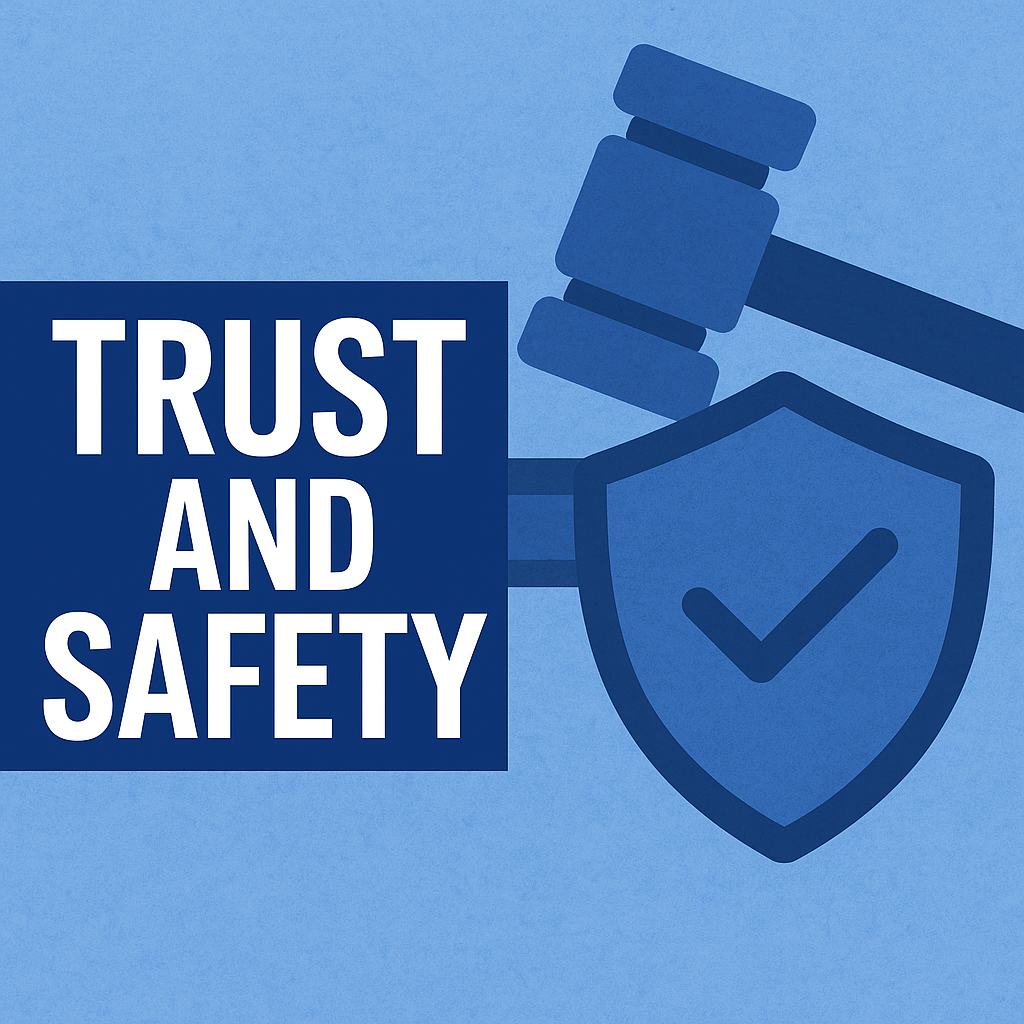Why Trust and Safety Matter in Charity Auctions
The charity auction industry is built on donor trust, community goodwill, and mission alignment. When donors participate in an auction—whether in person, online, or through mobile bidding—they are doing more than placing bids.
They are investing their trust in the organization’s ability to handle money securely, honor promises, and use funds responsibly.
If trust is compromised, it doesn’t just affect one event. It can harm future fundraising, donor retention, brand reputation, and even legal standing.
Auction Fundraising with Confidence
Secure payments, fraud checks, permission controls, and clear audit trails—so your school, church, or nonprofit can focus on impact while we protect every bid and gift.
Launch Your Secure AuctionKey dimensions of trust and safety in charity auctions include:
- 🔐 Payment and data security
- 🤝 Donor and bidder identity protection
- 📜 Legal and regulatory compliance
- 🧾 Transparent reporting and fair auction practices
- 🧠 Ethical marketing and communication
Common Trust and Safety Risks
Understanding the risks is the first step toward building safer auctions.
1. Payment and Transaction Fraud
- Fake credit card use or chargebacks
- Manipulated payment data
- Unauthorized bid activity
2. Bid Manipulation or “Shill Bidding”
- False bids to inflate prices artificially
- Collusion between bidders
- Inaccurate bid tracking
3. Donor Data Exposure
- Unsecured donor information storage
- Poor access control or internal data leaks
- Phishing or impersonation attempts
4. Misrepresentation of Auction Items
- Fake or unclear item descriptions
- Undelivered items or broken promises
- Poor documentation of fair market value
5. Non-Compliance with Local Laws
- Unlicensed raffles or gambling violations
- Missing tax documentation
- Breaches of privacy laws (e.g., GDPR, CCPA)
Related Reading
Core Pillars of Trust and Safety in Charity Auctions
1. Transparency at Every Step
Trust starts with clarity.
- Publish clear rules, terms, and timelines.
- Display item descriptions, restrictions, and FMV.
- Show real-time bidding activity (without exposing personal details).
- Communicate how proceeds will be used.
2. Secure Payment Infrastructure
- Use PCI-compliant payment processors.
- Enable fraud monitoring and alerts.
- Offer donor-covers-fees options transparently.
- Send automated receipts with itemized details.
3. Data Protection and Privacy
- Store donor and bidder data securely with encryption.
- Implement role-based access controls for staff.
- Comply with relevant privacy regulations.
- Never sell or share donor data.
4. Fair Bidding Practices
- Disclose bidding rules upfront.
- Enable time-stamped bid tracking to avoid disputes.
- Use extended bidding to reduce sniping behavior.
- Monitor for suspicious or duplicate accounts.
5. Legal and Regulatory Compliance
- Research local raffle and gaming laws.
- Issue compliant tax receipts.
- Register for required fundraising permits.
- Maintain records for audits and accountability.
6. Community and Donor Trust
- Provide impact stories after each event.
- Thank bidders and donors publicly (with consent).
- Invite feedback and show how funds were allocated.
- Be transparent about administrative costs vs. proceeds.
Digital Trust in Online and Mobile Auctions
With the rise of mobile bidding and hybrid events, digital trust has become as important as in-person security.
Best practices include:
- Multi-factor authentication for admins
- Automatic bidder verification systems
- IP tracking to detect suspicious bidding patterns
- Secure QR codes and event links
- Accessible privacy policies and FAQs
Pro tip: Clear security messaging on your site or auction page (e.g., “PCI-Compliant,” “Encrypted Checkout,” “Verified Nonprofit”) significantly boosts donor confidence.
Ethical Communication and Marketing
Trust isn’t just about security — it’s also about honest storytelling and clear communication.
- Don’t overpromise on auction item value or delivery.
- Clearly state if items are donated or sponsored.
- Avoid aggressive upselling tactics that pressure donors.
- Respect bidder and donor communication preferences.
Transparent communication reduces refund requests, increases donor satisfaction, and protects your reputation.
More Resources
How Trust and Safety Build Long-Term Donor Loyalty
| With Trust & Safety | Without Trust & Safety |
|---|---|
| Increased donor retention | One-time participation |
| Higher bid activity | Drop in engagement |
| Lower fraud risk | Legal and financial exposure |
| Strong reputation | Negative word of mouth |
| Easier repeat campaigns | Rebuilding trust is slow |
Trust and Safety Checklist for Nonprofits
- Clear auction rules and terms
- Secure, PCI-compliant payments
- Bidder identity verification
- Transparent reporting and receipts
- Item authenticity and documentation
- Legal compliance with raffles/taxes
- Donor privacy protections
- Post-event impact reporting
✅ Following this checklist doesn’t just protect your organization — it helps you grow your auction into a trusted, repeatable fundraising engine.
How AI and Technology Can Strengthen Auction Safety
Emerging tech is transforming how nonprofits build trust:
- Fraud detection powered by AI pattern analysis
- Automated identity verification
- Real-time anomaly tracking during bidding
- Blockchain-backed transparency for high-value auctions
Even if you don’t use advanced tools yet, understanding these trends helps future-proof your operations.
More Resources
Final Thoughts
In the charity auction world, trust is currency.
Donors participate because they believe in the mission, but they return because they trust the experience.
By focusing on transparency, data protection, fair bidding, and compliance, nonprofits can build safe, credible fundraising ecosystems that last for years.
Trust and safety aren’t just legal checkboxes—they’re what make your community confident to give generously.
Frequently Asked Questions
What does “Trust & Safety” mean on this platform?
Trust & Safety covers policies and controls that protect organizations, bidders, and donors—from account verification and fraud monitoring to secure payments, data privacy, and incident response. General information, not legal advice.
How are organizations and fundraisers verified?
Accounts are approved individually. The team reviews identity and nonprofit details to confirm legitimacy before fundraising features or payouts are enabled.
Are payments processed securely and PCI compliant?
Yes. Card data is handled by PCI-compliant payment partners. Funds are held and disbursed securely, and processors perform additional risk checks. General information, not legal or tax advice.
How does the platform prevent fraud and chargebacks?
- Payout reviews and fraud signal monitoring
- Account and identity checks for organizers
- Secure checkout and activity audits
- Policies for prohibited behavior and items
How is donor and bidder data protected technically?
Data is protected with encryption in transit, access controls, role-based permissions, and activity logging. Admins can limit who sees financial or personal information.
Does the platform support privacy compliance (e.g., GDPR/CCPA)?
The platform provides privacy disclosures, opt-in/opt-out tools, and data export options to support compliance programs. Organizations remain responsible for their own legal obligations. General information, not legal advice.
What quick steps should admins take to set up safely?
- Complete organization verification and payout setup.
- Enable role-based access for staff/volunteers.
- Require strong passwords and 2FA for admins.
- Set clear shipping/pickup and refund policies on pages.
How can guests stay safe while bidding and donating?
- Use official event links and secure networks.
- Never share one-time codes or passwords.
- Review item terms (restrictions, expiration, pickup).
- Report suspicious activity to the organizer promptly.
When do payouts occur and why might they be reviewed?
Payouts follow processor timelines and can be held for manual review if fraud indicators appear or verification is incomplete. Reviews help protect organizers and donors.
How are disputes, refunds, or policy violations handled?
The team evaluates reports against the terms of service and may request documentation, pause payouts, or remove content. Payment partners also handle chargeback reviews. General information, not legal advice.
What items or activities are not allowed on the platform?
Items or behaviors that create safety, legal, or reputational risk are prohibited. Organizers should review the terms for restricted items, misleading claims, and unsafe fulfillment practices.
Is there a short Trust & Safety checklist we can use?
- “We verified our org and set payouts.”
- “Policies for shipping/pickup/refunds are posted.”
- “Admins use 2FA and least-privilege roles.”
- “We reviewed items for prohibited content.”
How should we assign staff roles to reduce risk?
Use role-based permissions, restrict financial exports to finance leads, and log who can edit items, bidders, or payouts. Remove access for volunteers when events conclude.
How do we avoid phishing or social engineering attempts?
- Confirm unusual requests via a known contact method.
- Check sender domains and avoid unknown links.
- Use 2FA and unique admin passwords.
- Report suspected scams to platform support quickly.
Which Trust & Safety KPIs should we track internally?
- Verification completion time and payout approval rate
- Chargeback rate and dispute resolution time
- Fraud-flagged transactions and false positives
- Admin 2FA adoption and access audit completion
What’s a safe timeline from signup to go-live?
- Day 0–1: Create account, submit verification.
- Day 2–3: Configure payouts, roles, and policies.
- Day 4–5: Test checkout, receipts, and refunds.
- Go-live: Monitor fraud signals and reports daily.
Are receipts and donor acknowledgments handled automatically?
Yes. Automatic receipts can be sent for winning bids and donations, and organizers can customize language to align with their acknowledgment and recordkeeping needs. General information, not tax advice.
What fulfillment and pickup practices reduce risk post-event?
- Collect addresses during checkout; verify IDs on pickup.
- Document item condition and handoff details.
- Use trackable shipping for high-value items.
- Publish deadlines and contact info for disputes.
How do we report suspicious behavior or policy violations?
Notify platform support with event details, user info, and any evidence (messages, receipts). Prompt reporting enables faster reviews and can prevent further loss.
Is there a short internal script to approve our safety plan?
- “Verification and payouts are set; roles use least privilege.”
- “Policies (refunds, shipping, prohibited items) are posted.”
- “2FA is enabled for all admins; audits scheduled weekly.”
- “A dispute contact and escalation path are documented.”
💡 Try this in ChatGPT
- Summarize the article "Trust and Safety in the Charity Auction Industry: A Complete Guide" from https://www.charityauctionstoday.com/p/trust-and-safety/ in 3 bullet points for a board update.
- Turn the article "Trust and Safety in the Charity Auction Industry: A Complete Guide" (https://www.charityauctionstoday.com/p/trust-and-safety/) into a 60-second talking script with one example and one CTA.
- Extract 5 SEO keywords and 3 internal link ideas from "Trust and Safety in the Charity Auction Industry: A Complete Guide": https://www.charityauctionstoday.com/p/trust-and-safety/.
- Create 3 tweet ideas and a LinkedIn post that expand on this Guides topic using the article at https://www.charityauctionstoday.com/p/trust-and-safety/.
Tip: Paste the whole prompt (with the URL) so the AI can fetch context.
Share this article
Tom Kelly, TEDx speaker and CEO of CharityAuctions.com, helps nonprofits raise millions through auctions and AI. He hosts The Million Dollar Nonprofit podcast and inspires leaders to live their legacy, not just leave it.
Table of contents
Create Your Auction
Raise 40% more with smart bidding tools


